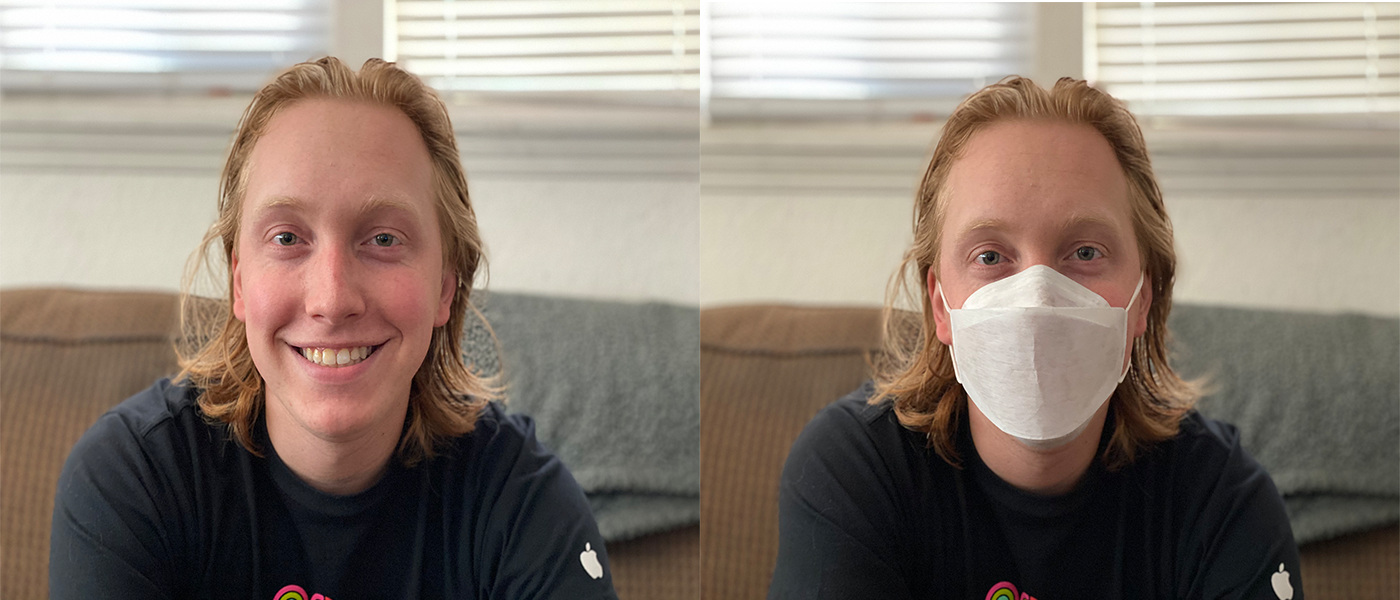The pandemic has changed our lives in many ways, big and small. One of these changes includes wearing masks in day to day life to protect the health of ourselves and others.
Senior journalism student Grant Anderson was interested in exploring how people have adjusted to not seeing others’ smiles and what its effects are. He brought up this story idea to our team and we all really liked the idea.
“I wanted to pursue this story because I like to smile to diffuse potential conflict or misunderstandings with other people and I feel like wearing masks makes me worry more about whether I’m giving off an intimidating stare” said Grant.
When doing research for the backgrounder, I saw that research has been conducted within the last year to study how masks are affecting social interaction and BBC published an article about how masks affect communication. I searched around on Twitter and Reddit, searching for the words “mask” and “smile” together and there was a lot of discussion about this. People missed seeing others’ smiles and on the flip side, some liked the anonymity masks give them. I even came across a TikTok where someone expresses how they forgot how to smile during the pandemic due to just squinting their eyes without moving their mouth.
Grant worked on video and headed to campus and downtown San Luis Obispo for a word on the street, asking people about the focus on eye contact when wearing a mask and how wearing a mask has affected connection to others. Senior journalism student, Jonathon Crespin, took pictures of people’s smiles for the interaction portion of the story.
“The most enjoyable part of exploring this topic was taking pictures of random people smiling because it really brought a joy to a lot of those people’s day and I realized that people actually like to smile, they just need a little push” said Jonathon.
Senior journalism student Sophie Baye is the writer for the story and interviewed Catie Alexander, an employee at Trader Joe’s, about how masks have influenced communication at work.
Grant and Sophie reached out to a few professors throughout the week and Dr. Anuraj Dhillon, a communications professor at Cal Poly, was open to speak about this topic. Sophie was able to conduct the interview through Zoom. Dr. Dhillon offers great insight to the story because she teaches nonverbal communication and interpersonal communication courses. She offered advice on how to effectively communicate with others when wearing a mask.
“If you have a question, you raise your eyebrows, and you open your eyes wide open. So using that a lot more, I think emphasizing the body language.” said Dr. Dhillon, “I know some people don’t use a lot of gestures, but I think using gestures really helps you get your message across. So maybe using more hand gestures, or focusing more on the other person’s hand gestures, so you can understand what they’re trying to say.”
This change in communication is something everyone can relate to in some shape or form. We hope that those who come across the story know that they’re not alone in this experience.
“This topic was enjoyable because it’s focused around a relatively new universal experience that society is sorting through together and still hasn’t quite figured out.” said Sophie, ”We all know the feeling of wearing a mask and not being sure how to communicate effectively with someone because they can’t see our smile, so you see a bit of yourself in the story.”
